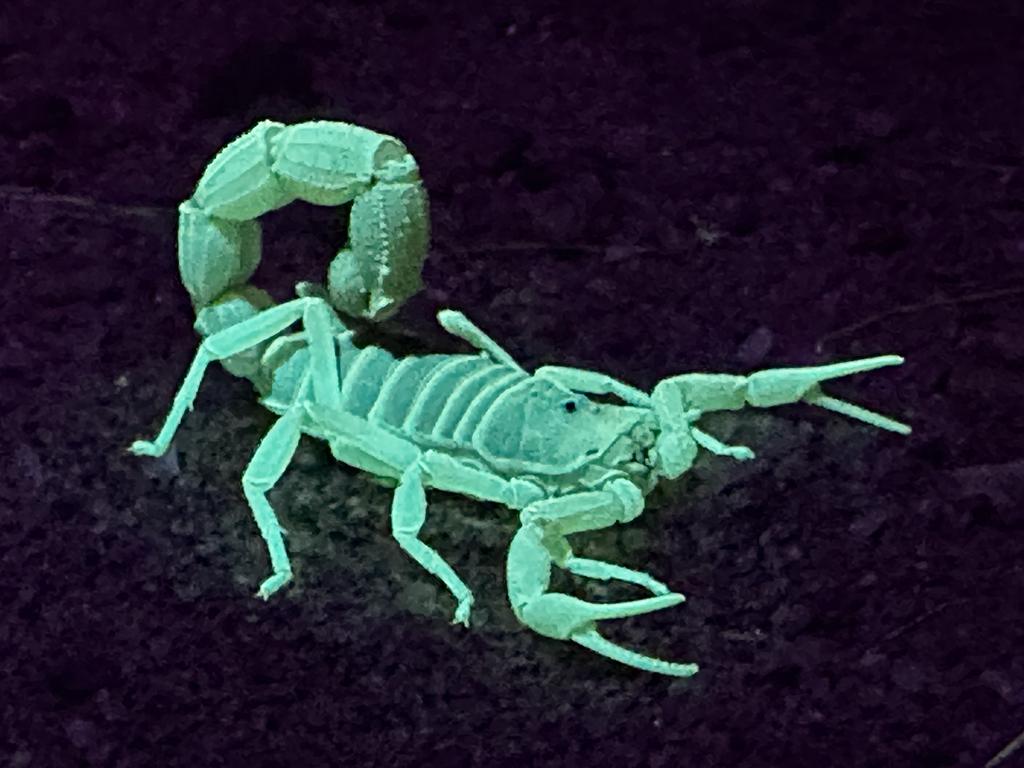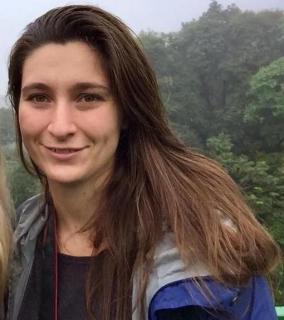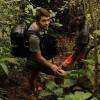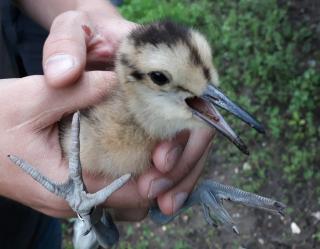Camera traps have been a key part of the conservation toolkit for decades. Remotely triggered video or still cameras allow researchers and managers to monitor cryptic species, survey populations, and support enforcement responses by documenting illegal activities. Increasingly, machine learning is being implemented to automate the processing of data generated by camera traps.
A recent study published showed that, despite being well-established and widely used tools in conservation, progress in the development of camera traps has plateaued since the emergence of the modern model in the mid-2000s, leaving users struggling with many of the same issues they faced a decade ago. That manufacturer ratings have not improved over time, despite technological advancements, demonstrates the need for a new generation of innovative conservation camera traps. Join this group and explore existing efforts, established needs, and what next-generation camera traps might look like - including the integration of AI for data processing through initiatives like Wildlife Insights and Wild Me.
Group Highlights:
Our past Tech Tutors seasons featured multiple episodes for experienced and new camera trappers. How Do I Repair My Camera Traps? featured WILDLABS members Laure Joanny, Alistair Stewart, and Rob Appleby and featured many troubleshooting and DIY resources for common issues.
For camera trap users looking to incorporate machine learning into the data analysis process, Sara Beery's How do I get started using machine learning for my camera traps? is an incredible resource discussing the user-friendly tool MegaDetector.
And for those who are new to camera trapping, Marcella Kelly's How do I choose the right camera trap(s) based on interests, goals, and species? will help you make important decisions based on factors like species, environment, power, durability, and more.
Finally, for an in-depth conversation on camera trap hardware and software, check out the Camera Traps Virtual Meetup featuring Sara Beery, Roland Kays, and Sam Seccombe.
And while you're here, be sure to stop by the camera trap community's collaborative troubleshooting data bank, where we're compiling common problems with the goal of creating a consistent place to exchange tips and tricks!
Header photo: Stephanie O'Donnell
Snow Leopard Trust



- 0 Resources
- 44 Discussions
- 6 Groups
- 0 Resources
- 0 Discussions
- 5 Groups

- 0 Resources
- 0 Discussions
- 6 Groups
- @csugarte
- | she/her
I am a chilean PhD student working on human-carnivore conflict and coexistence. Currently working with camera traps and automated behavioral response systems.
- 0 Resources
- 2 Discussions
- 4 Groups
Wildlife Conservation Society (WCS)
I am a biologist interested in land use change impacts on biodiversity and sustainable value chains. I work with productive sectors, incorporating biodiversity conservation as a criteria for planning and managing productive systems.
- 0 Resources
- 0 Discussions
- 4 Groups
British-Costa Rican | Interested in transdisciplinary research in Planetary Health amongst other things

- 0 Resources
- 1 Discussions
- 13 Groups
- @Rawail
- | Rawail
NbS Expert/ Environmentalist
- 0 Resources
- 0 Discussions
- 5 Groups
- @NinaTuttie
- | She
An avid learner interested in wildlife ecology, conservation technology and community development
- 0 Resources
- 0 Discussions
- 8 Groups
- @Agripina
- | Miss
Frankfurt Zoological Society
As a wildlife conservationist, I am deeply committed to nature conservation, community empowerment, and wildlife research in Tanzania. I've actively engaged in community-based projects, passionately advocating for integrating local communities into conservation.
- 3 Resources
- 23 Discussions
- 6 Groups
- @Tina
- | Her
I am a young researcher and scientist with extensive experience in the ecology of small mammals. I am open to career and capacity-building programs.



- 0 Resources
- 16 Discussions
- 6 Groups
- @shawnj
- | he/him
- 0 Resources
- 1 Discussions
- 1 Groups
Co-founder @ Behold
- 0 Resources
- 4 Discussions
- 6 Groups
I put together some initial experiences deploying the new SpeciesNet classifier on 37,000 images from a Namibian camera trap dataset and hope that sharing initial impressions might be helpful to others.
23 April 2025
A nice resource that addresses the data interoperability challenge from the GBIF.
4 April 2025
Conservation International is proud to announce the launch of the Nature Tech for Biodiversity Sector Map, developed in partnership with the Nature Tech Collective!
1 April 2025
The FLIR ONE thermal camera is a compact and portable thermal imaging device capable of detecting heat signatures in diverse environments. This report explores its application in locating wild animals across large areas...
27 March 2025
WWF's Arctic Community Wildlife Grants program supports conservation, stewardship, and research initiatives that focus on coastal Arctic ecology, community sustainability, and priority Arctic wildlife, including polar...
7 March 2025
The Smithsonian’s National Zoo and Conservation Biology Institute (SNZCBI) is seeking an intern to assist with multiple projects related to conservation technology for wildlife monitoring. SNZCBI scientists collect data...
3 March 2025
Article
NewtCAM is an underwater camera trap. Devices are getting deployed worldwide in the frame of the CAMPHIBIAN project and thanks to the support of our kind early users. Here an outcome from the UK.
24 February 2025
Osa Conservation is launching our inaugural cohort of the ‘Susan Wojcicki Research Fellowship’ for 2025, worth up to $15,000 per awardee (award value dependent on project length and number of awards given each year)....
10 February 2025
Did someone read/know this book?
9 February 2025
The worst thing a new conservation technology can do is become another maintenance burden on already stretched field teams. This meant Instant Detect 2.0 had to work perfectly from day 1. In this update, Sam Seccombe...
28 January 2025
This leads to an exciting blog we did recently, it also includes a spatial map indicating elephant movement tracks of an orphaned elephant who self released himself into the wild (Kafue National Park). Cartography was...
28 January 2025
The Zoological Society of London's Instant Detect 2.0 is the world's first affordable satellite connected camera trap system designed by conservationists, for conservationists. In this update, Sam Seccombe describes the...
21 January 2025
June 2025
July 2025
October 2023
event
58 Products
Recently updated products
4 Products
Recently updated products
| Description | Activity | Replies | Groups | Updated |
|---|---|---|---|---|
| I've been wondering about rangefinding/size-measuring technologies that could be incorporated into camera traps for a long time, and am following this thread and the work of @... |
|
Camera Traps | 3 years 10 months ago | |
| Thank you Stephanie, |
|
Camera Traps | 3 years 10 months ago | |
| Hi Doug. It's actually an interesting application, however it might actually be cheaper to try and put together an off-the-shelf solution rather than go custom. There... |
|
Camera Traps | 3 years 10 months ago | |
| That's such a cool list. Thanks for posting it! Akiba |
|
Camera Traps | 3 years 10 months ago | |
| Sharing this for COS4Cloud project. I am not part of the project. if you have questions, there are emails at the end for Alex and Angela... |
|
Camera Traps | 3 years 10 months ago | |
| Hi, Maybe try sourcing from Aliexpress? I an't speak to the quality, but at some price point it becomes worth looking into this option. -harold |
|
Camera Traps | 3 years 11 months ago | |
| Hi Michelle, I've worked on a few arboreal camera trap surveys so I might be able to share some information. With other researchers we've been working on a paper that... |
|
Camera Traps | 3 years 11 months ago | |
| I just did a quick search and it doesn't look like there's a place where you can ship them in Mexico. However, at least in Mexico City, there are a bunch of collection... |
|
Camera Traps, Latin America Community | 4 years ago | |
| Hello I understand how frustating that can be....I would try with the camera closer. 2.5m seem too far away for rat...specially that it must have some vegetation between. Also... |
+5
|
Camera Traps | 4 years ago | |
| Hi. Apparently it's a common problem with Spypoint cameras. I recommend checking out this thread and testing out the reboot procedure. Akiba |
|
Camera Traps | 4 years 1 month ago | |
| While the manufacturer might claim that the camera requires 8xAA at 1.5v each, most likely it will work just fine with NiMH batteries that have nominal voltage of 1.2V. I have... |
+4
|
Camera Traps | 4 years 1 month ago | |
| Hi I just tried and works great, I will include it in my workflow. Thanks for your work! Juan |
+9
|
Camera Traps | 4 years 1 month ago |
BearID To Go
21 July 2020 12:00am
How do I build bespoke conservation technology?
20 July 2020 12:00am
How do I repair my camera traps?
13 July 2020 12:00am
Tech Tutors: How do I get started using ML for my camera traps? Building Accurate Project-Specific Models
25 June 2020 12:02am
26 June 2020 2:32pm
Hi everyone!
We've now posted Sara's session to our youtube channel, and I've also popped it up the top of this thread.
The collaborative notes worked really well! I've now updated them to capture what happened in the chat - it should be a helpful companion to go alongside the recording. The notes have links, projects, and key discussions we saw in the chat, and summarise the questions Sara coverd in the discussion as well as the Qs we weren't able to get to (40mins overtime was our limit!). If your question was one of the outstanding ones and you'd like to have it answered, please drop it in the discussion below.
The notes now also have the participant check ins (such an awesome range of places, projects and interests!) - I'm sharing these as seeing what other people are doing might help you connect with each other. If you see someone you want to connect with, try and find them using our member direcyour people tab. If you can't, email Ellie and she will see if that person is happy to hear from you before connecting you.
Reminder, registration is open for Carlos' tutorial next week: How do I perform automated recordings of bird assemblages? Register here.
Thanks everyone!
Steph
2 July 2020 8:58pm
Great talk! I thoroughly enjoyed it. Some high schoolers have done small AI projects(s) and have interest in the wildlife.
What resources would you all suggest to further develop high schooler’s interest in AI?
Era of the Condor: A Species' Future in Recovery (Part 3)
2 July 2020 12:00am
Era of the Condor: A Species' Future in Recovery (Part 2)
25 June 2020 12:00am
Seeking feedback: draft principles for responsible use of conservation surveillance technology
9 June 2020 6:22pm
From Autonomous Cars to Aqualink: Developing a Reef Monitoring System
9 June 2020 12:00am
Event: Arm’s AI Virtual Tech Sessions
 Arm
Arm
9 June 2020 12:00am
How do I get started using Machine Learning for my camera traps?
9 June 2020 12:00am
Repairing Camera Traps
28 November 2019 11:20am
14 December 2019 8:50pm
Hi Rob, Dave and all,
So glad to see and join an active conversation on this. I am not directly using camera traps in my work but the lifetime of conservation technologies is something I have been thinking about and I am keen to get involved in finding solutions.
Could a Google spreadsheet like this one help identify those who are interested and the extent of the problem/most common issues ? If there is interest in participating, events on the Restart Project model Alasdair mentioned would be great places to get a sense of the most common faults and potentially create tutorials for those Level 1 repairs.
14 December 2019 8:59pm
Hi Laure,
Firstly, a great article and a big part of the inspiration behind the idea to reuse, repair and 'upcycle' devices like camera traps. Thanks so much for the links also. The Google Sheet is a great idea and thanks for building it! I recently posted a Twitter poll to find out the most common cameras being used so we can make sure to cover their assessment. And the Restart Project looks amazing! I love it. I've fallen a bit behind with a couple of other things, but looking forward to getting back to the broken camera hacks soon.
Cheers,
Rob
8 June 2020 5:47pm
Hi everyone,
I am resurrecting this thread as WILDLABS is currently planning an online tutorial on camera trap repairs in the field on 23rd July at 11 AM ET on which I'll be co-presenting. Do join then if the topic is still of interest! Also, if you've got repair tips you'd be willing to share on this webinar, possibly as a short step by step video, please get in touch.
Diagnosing the cause of malfunctions is a recurring theme on this thread but are there other issues you would like to learn more about or malfunctions you encounter regularly? I created this spreadsheet a while back to get an idea of what the most common camera models and failures were. if you are interested and have a couple minutes, could you contribute to it? It would really help make the tutorial webinar as focused and relevant as possible and maybe create more tutorials and ressources at a later stage.
Announcing the 2020 CLP Team Award Winners
8 June 2020 12:00am
Innovator Interview: Hack the Poacher
4 June 2020 12:00am
Competition: 2020 Hackaday Prize
26 May 2020 12:00am
Free underwater camera units
10 January 2020 10:06pm
19 May 2020 11:23am
Is this offer still open
WILDLABS Tech Tutors: Season One
19 May 2020 12:00am
Era of the Condor: A Species' Future in Recovery
5 May 2020 12:00am
Competition: iWildCam 2020
4 May 2020 12:00am
Guidelines or Protocols for Camera Trapping Monitoring of Eurasian Otters?
20 April 2020 10:55am
28 April 2020 3:05pm
Hi Naomi,
I'm not aware of any guidelines published, but we've got the smooth coated otter in our camera traps before, and I suggest you follow a stratified sampling approach. You can stratify habitats along streams and flowing water bodies and place camera traps along stream banks especially where there are reed beds etc.
WILDLABS Community Call Recording: Rainforest X-PRIZE
30 March 2020 12:00am
Protocols for IDing big batches of camera trap data
5 March 2020 10:38am
19 March 2020 10:01am
Hi Morgan and Tim,
Thank you so much for these resources, I will go through these and get back to you with any questions.
Best,
Michelle
28 March 2020 6:22pm
Hi Michelle,
I had a group of undergrads help me with a 40,000-image dataset a few years back. We used the TEAM network Wild.ID program, so each photo that was tagged indicated who tagged it. That was helpful for checking quality later on. For our common, unmistakeable species (e.g. whitetail deer), I didn't require a second identification, but for more challenging groups (foxes, mustelids), I would often have a second person review the ID, or do it myself. Later on, I had a student go through all the tagged images of a particular species (gray squirrel, etc.) and verify the first ID. I found that some of the undergrads were very reliable in their ability to ID the species, whereas some other students needed to have their work checked more meticulously. I later thought of the idea of building a training set of say, 100 photos, to have each student run through to get a sense for their familiarity with the species, but also their ability to handle the more tricky scenarios that come up often in camtrap datasets.
Most folks could only handle 1-1.5 hours of continuous tagging. I had a few enthusiasts who would go for 2 hours straight, but that was rare. We logged effort in a shared google spreadsheet, where the students noted the dataset they worked on, any issues that came up, and any individual images that needed a second check.
I also tried to set up a more ergonomic workstation for folks (multiple monitors raised up, ergonomic mouse, etc.). Since the motion is so repetetive, easy for folks to develop carpal tunnel syndrome.
If you are dealing with a much larger dataset, you might want to look into more sophisticated AI/automation methods, but for a smaller project, this was doable. If you have a university connection, you can often recruit folks through chapter groups of The Wildlife Society. Student are often eager to gain experience, although many don't stick with it once they find out how unglamorous it is!
Good luck!
-Andy
29 March 2020 5:33am
Hi Tim,
Your diagramme shows a USB connection between the camera and the RPi. What kind of camera is it? Also, does this mean the RPi lives with the camera in the field?
Very interesting work.
Thanks,
-harold
Webinar: Citizen Science Online
 SciStarter
SciStarter
26 March 2020 12:00am
Enter the Zooniverse: Try Citizen Science for Yourself!
18 March 2020 12:00am
Testing an Early Warning System to Mitigate Human-Wildlife Conflict on the Bhutan-India Border
11 March 2020 12:00am
Announcing the iWildCam 2020 Camera Trap Kaggle Competition!
10 March 2020 7:08pm
3 Ways Your Conservation Technology Could Become a Shiny Pile of Junk, and How to Avoid It
9 March 2020 12:00am
Project Advice: Average speed camera system
7 March 2020 6:26pm
#Tech4Wildlife 2020 Photo Challenge In Review
4 March 2020 12:00am
Call for Nominations: Tusk Conservation Awards
3 March 2020 12:00am
Hawai'i Conservation Conference
 Hawaiʻi Conservation Alliance
Hawaiʻi Conservation Alliance
28 February 2020 12:00am




























































25 June 2020 6:01pm
This is a big, important question! I think having traceable DOIs for both datasets and machine learning models is a step in the right direction. GBIF is committed to this and can provide data DOIs, read more detail here and here.